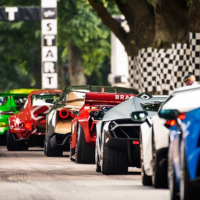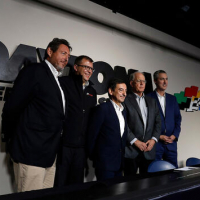Formula 1’s 2021 car look set to bring a proper ‘ground effect’ concept back to the sport for the first time since it was banned at the end of 1982. But while the idea of a full-length diffuser is different to the last time cars were designed like this, the aim is identical: produce the maximum amount of downforce possible through undercar aero.
Speed and the forces acting on the cars and drivers spiraled to an all-time high during the ground effect era, often leading to catastrophic accidents. As such, the FIA took several measures throughout to try and reign in the teams but, in a final act, it ushered in new regulations for 1983 that saw the car outfitted with a flat bottom (seen here on the 1990 Ferrari) between the front and rear wheels with no skirts allowed at all.
With discussions now underway between F1, the FIA and teams to finalise new regulations aimed at overhauling grand prix racing, the first firm details about the plans for have emerged. As Giorgio Piola’s illustration of what a 2021 car could look like shows, the new rules revolve around a complete change of approach to how a car produces downforce. The idea is to rid the sport of the complex aerodynamic devices that are dominant nowadays, especially in the wing and bargeboard area. There will be, for example, a much simpler and less sensitive front wing. But the biggest change is taking place underneath the car – with a series of Venturi tunnels feeding a deep twin diffuser that will produce much of the car’s downforce. The concept is similar to what we previously saw in F1, pioneered by Lotus in the late 1970s (as shown below), before being banned in 1983.
The FIA’s head of single-seater technical matters Nikolas Tombazis said: “We want to make it more possible for cars to race each and follow each other and to have more exciting battles. We want to have tyres that enable people to fight each other without degrading or only giving a short interval for the person attacking to attack. “They are simpler than the current cars because a lot of the small components have been removed: especially in front of the sidepods, the front wings are simpler. There is a diffuser going right under the car – a venturi channel type manner. There are tunnels under the sidepods from the front to the back.”
The belief is that the combination of ground effect, simpler aerodynamics and front wheel deflectors will all work together to help cars to follow each other much closer.
The current generation of cars lose around 45% of their downforce when they are two car lengths behind a rival. The latest simulation data of the 2021 idea puts the loss at between 5-10%. Tombazis added: “Two strong vortices suck in a lot of the rear wing wake and, as a result, what the following car sees is much, much cleaner flow. So we have a massive reduction of the loss of downforce for the following car.”
F1 hopes to reach agreement with teams about the new rules by September 15, so the process can then move forward for ratification by the FIA World Motor Sport Council before the end of October.
By Motorsport.com
Bringing the focus of the 2021 aerodynamics to the underbody of the car will not only create a shift in design philosophy, but should also at least make a step into improving the on-track product of F1. Currently, F1 cars operate with a flat floor, which transitions to a diffuser at the rear axle point. In conjunction with a rear wing, the two contribute to the majority of a car’s downforce, but at the cost of a large turbulent wake – colloquially known as ‘dirty air’. Turbulence is something that a following car is sensitive to, as cars are generally designed to operate at their best in laminar, ambient conditions. Switching to Venturi tunnels, which would open up at the front of the sidepods, develops what is known as a ground effect, where air is accelerated harder as it transitions between the car’s floor and the ground.
This develops more downforce, and means that the cars can work with a reduced rear wing size. The focus on underbody aero also reduces the sensitivity of the aerodynamic balance, meaning a following car won’t suffer from the immediate loss of downforce within a turbulent wake. Adding deflectors to the front wheels will assist with trimming the wheel wake, ensuring that those Venturi tunnels remain effective. The wake turbulence is notoriously difficult to manage, hence the growing complexity of the current bargeboard packages (as highlighted below), and inhibiting that wake means that the bargeboards can be more tightly regulated.
By Jake Boxall-Legge


